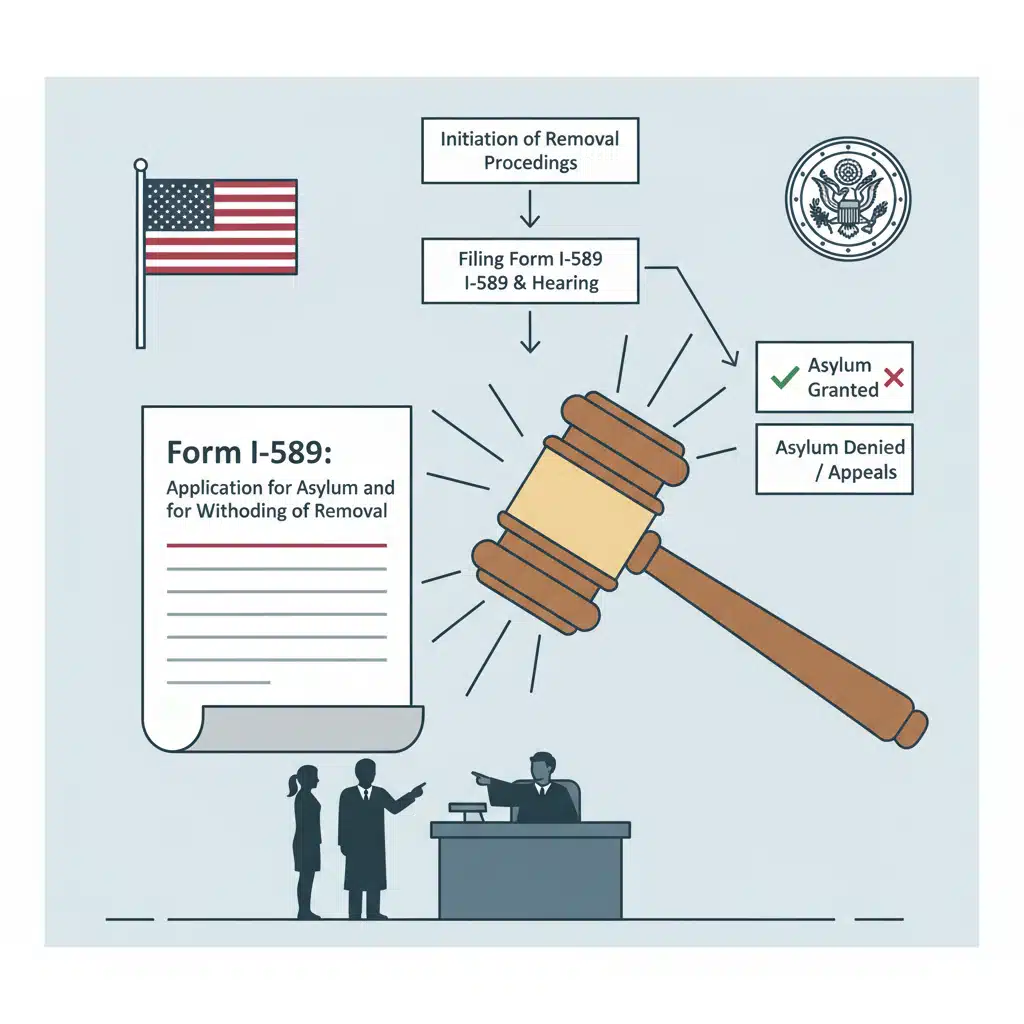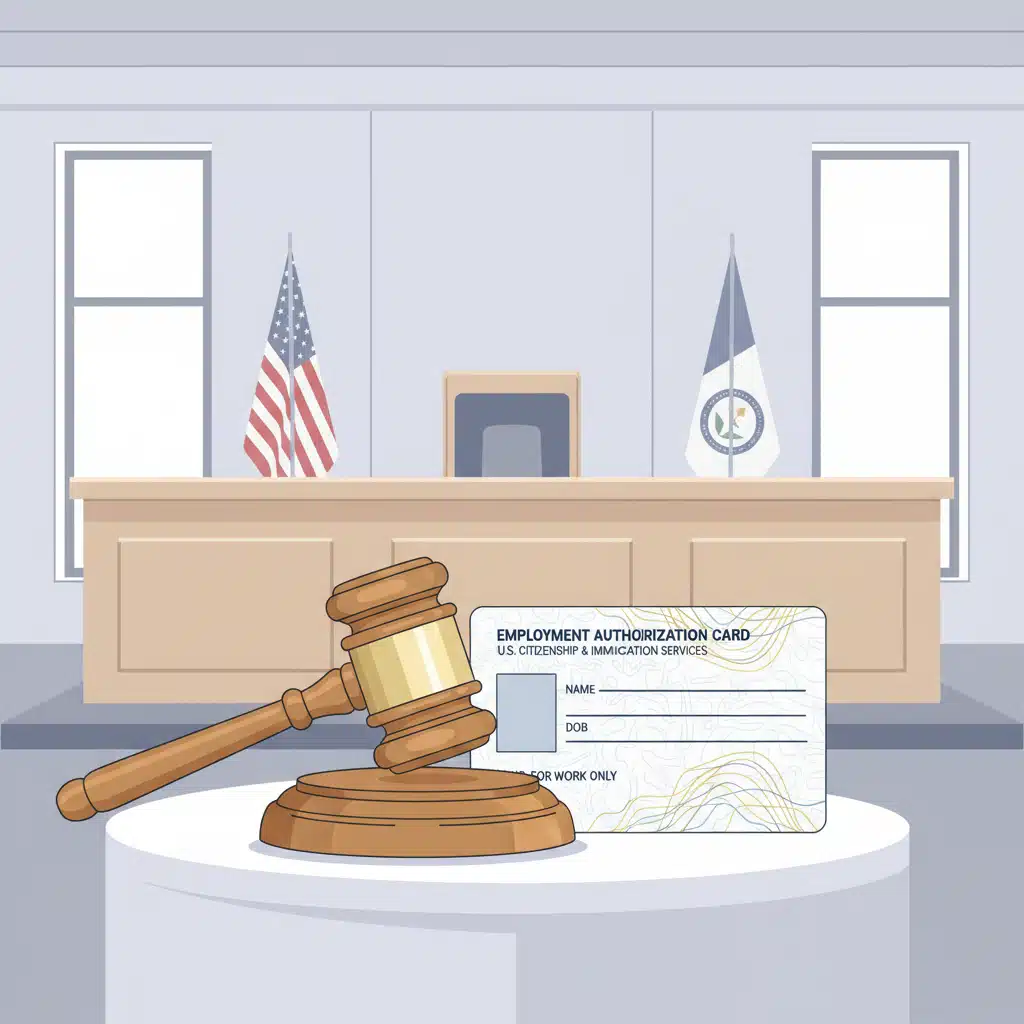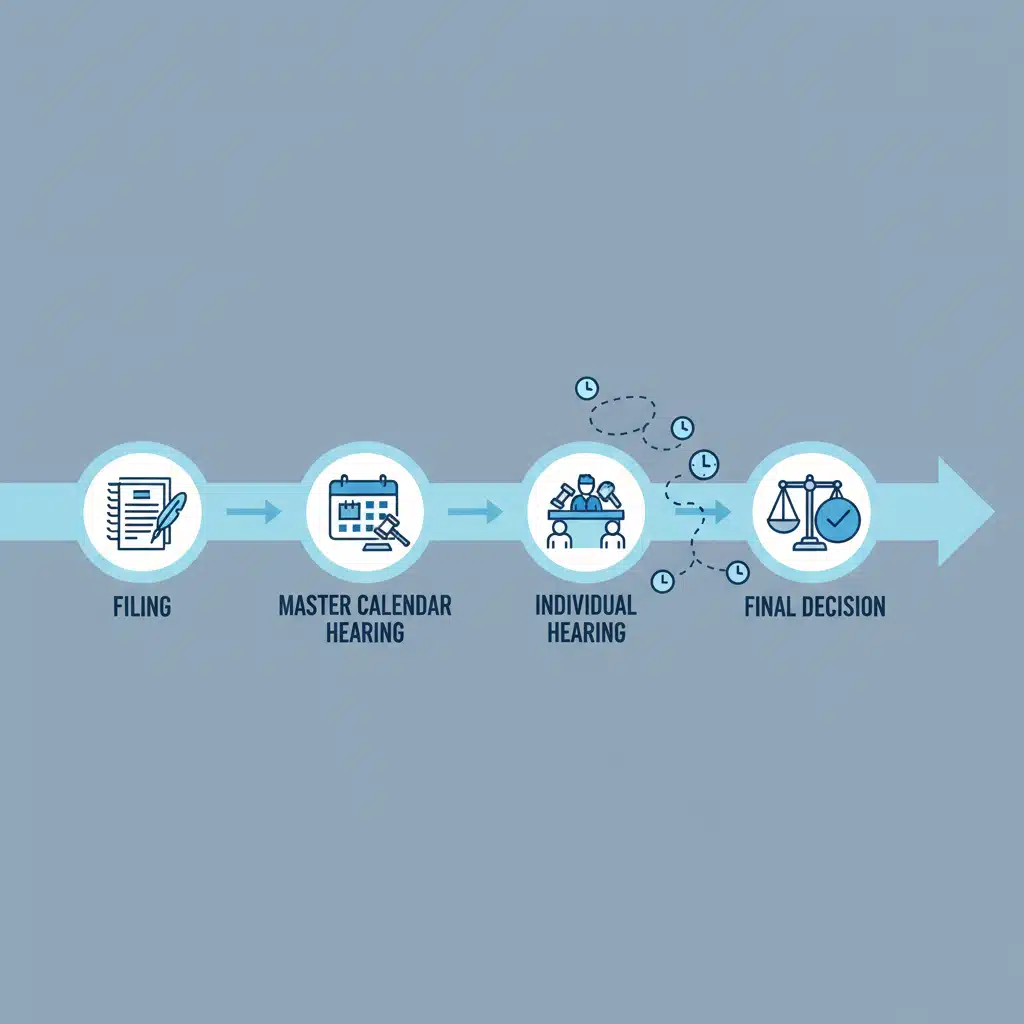Published on MichaelPiri.com
Key Features:
- Complete technical explanation of what expedited removal is and how it works
- Detailed legal framework analysis based on INA Section 235(b)(1) and implementing regulations
- Current 2025 expansion details under Trump’s executive orders and DHS implementation
- Step-by-step procedural breakdown including credible fear screening processes
- Comprehensive coverage of detention requirements, exceptions, and constitutional challenges
Technical Depth:
- Explains the January 21, 2025 DHS expansion that restored expedited removal “to the fullest extent authorized by Congress” affecting undocumented immigrants anywhere in the United States who cannot prove they have resided in the U.S. for at least two years National Immigration ForumFederal Register
- Details the credible fear screening process under 8 CFR § 235.3 and INA section 235(b)(1)(A) Legal Information InstituteUSCIS
- Covers detention requirements and constitutional challenges including recent court decisions Expedited Removal of Aliens: Legal Framework – EveryCRSReport.com
- Includes current enforcement statistics showing ICE arrested roughly 30,000 immigrants in June 2025 Trump’s immigration enforcement record so far: High arrests, low deportations
Practical Information:
- Documentation strategies for proving continuous presence
- Rights and protections available during expedited removal
- Comparison with traditional removal proceedings
- Legal challenges and constitutional issues
- Impact on different immigrant populations including paroled individuals
The article serves as a comprehensive resource for legal practitioners, advocates, and community members seeking to understand the current expedited removal landscape under the Trump administration’s expanded enforcement policies.
The expedited removal process represents one of the most significant and powerful tools in the U.S. immigration enforcement arsenal. Under the Trump administration’s renewed immigration enforcement approach, these procedures have been dramatically expanded to their fullest statutory extent, fundamentally altering the landscape of immigration law and enforcement. This comprehensive analysis examines the technical framework, legal foundations, and current implementation of expedited removal procedures as they operate in 2025.
What Is Expedited Removal?
Expedited removal is a streamlined deportation process established by Congress in 1996 under the Illegal Immigration Reform and Immigrant Responsibility Act (IIRIRA). This administrative procedure allows U.S. Customs and Border Protection (CBP) and Immigration and Customs Enforcement (ICE) officers to rapidly remove certain noncitizens from the United States without traditional immigration court proceedings or hearings before an immigration judge.
The fundamental distinction of expedited removal lies in its bypass of the typical removal process. Under normal circumstances, individuals facing deportation are entitled to appear before an immigration judge, present their case, and potentially appeal adverse decisions. Expedited removal eliminates these procedural safeguards for qualifying individuals, allowing for deportations to occur in as little as 24 hours.
Legal Framework and Statutory Authority
Expedited removal derives its authority from Section 235(b)(1) of the Immigration and Nationality Act (INA), codified at 8 U.S.C. § 1225(b)(1). The statute grants the Department of Homeland Security broad discretionary authority to apply expedited removal procedures to specified categories of noncitizens.
Core Statutory Provisions
Under INA Section 235(b)(1)(A)(i), immigration officers possess authority to order the immediate removal of aliens who:
- Lack proper documentation: Individuals found inadmissible under INA Section 212(a)(7) for not possessing valid entry documents
- Engaged in fraud or misrepresentation: Persons inadmissible under INA Section 212(a)(6)(C) for attempting to obtain immigration benefits through material misrepresentation or fraud
Designation Authority
Critical to understanding current enforcement is INA Section 235(b)(1)(A)(iii), which grants the Secretary of Homeland Security “sole and unreviewable discretion” to designate additional categories of aliens subject to expedited removal. This provision enables administrative expansion of expedited removal beyond those encountered at ports of entry.
The Trump Administration’s 2025 Expansion
On January 20, 2025, President Trump signed Executive Order “Protecting the American People Against Invasion,” directing the massive expansion of expedited removal procedures. The following day, January 21, 2025, DHS published a Notice in the Federal Register implementing this expansion to the maximum extent authorized by Congress.
Current Scope of Application
Under the expanded expedited removal policy effective January 21, 2025, undocumented immigrants anywhere in the United States who cannot prove they have resided in the U.S. for at least two years are subject to expedited deportation. This Notice rescinds the March 21, 2022 Notice and restores the scope of expedited removal to the fullest extent authorized by Congress.
The 2025 expansion represents a return to the broad enforcement posture adopted during Trump’s first term in 2019, which the Biden administration had rescinded in 2022, limiting expedited removal to individuals apprehended within 100 miles of the border within 14 days of entry.
Geographic and Temporal Scope
Previously, ICE and CBP only used expedited removal against people within 100 miles of the border and within 14 days of their arrival. Now, the government has said it plans to use expedited removal anywhere in the country against any undocumented person who can’t prove they have been in the U.S. continuously for two years before the arrest.
This expansion eliminates the concept of “sanctuary” jurisdictions with respect to expedited removal, as federal immigration officers now possess authority to apply these procedures anywhere within U.S. borders.
Technical Procedures and Implementation
Initial Screening and Determination
When ICE or CBP officers encounter individuals potentially subject to expedited removal, they must follow specific procedural requirements outlined in 8 CFR § 235.3:
- Identity and Status Verification: Officers must determine whether the individual was lawfully admitted or paroled into the United States
- Burden of Proof: Aliens who have not been admitted or paroled and who are subject to expedited removal have the burden of proving that they are not inadmissible and satisfy the continuous physical presence requirement
- Documentation Review: Officers examine any documentation provided to establish legal presence and continuous residence
Two-Year Continuous Presence Requirement
The critical threshold for expedited removal eligibility centers on the ability to demonstrate continuous physical presence in the United States for two years immediately preceding the inadmissibility determination. Any absence from the United States serves to break the period of continuous physical presence.
This requirement places a substantial evidentiary burden on individuals to document their continuous presence through:
- Utility bills with dated postmarks
- Lease agreements with signatures and dates
- Employment records
- School enrollment documentation
- Medical records
- Bank statements
- Tax filings
Supervisory Review Requirements
Any removal order entered by an examining immigration officer pursuant to section 235(b)(1) of the Act must be reviewed and approved by the appropriate supervisor before the order is considered final. Such supervisory review shall not be delegated below the level of the second line supervisor.
This supervisory review requirement serves as a quality control mechanism, though it does not constitute an independent hearing or appeal process.
Credible Fear Screening Process
Triggering the Credible Fear Process
If an alien subject to the expedited removal provisions indicates an intention to apply for asylum, or expresses a fear of persecution or torture, or a fear of return to his or her country, the inspecting officer shall not proceed further with removal of the alien until the alien has been referred for an interview by an asylum officer.
This represents the primary safeguard within the expedited removal framework, providing a pathway for individuals with protection claims to avoid immediate deportation.
Credible Fear Interview Procedures
The credible fear screening process involves several critical components:
- Referral Requirements: The referring officer shall provide the alien with a written disclosure on Form M-444, Information About Credible Fear Interview, describing the purpose of the referral and description of the credible fear interview process
- Consultation Rights: Individuals have the right to consult with others prior to the interview at no expense to the government
- Detention Pending Interview: Pending the credible fear determination by an asylum officer and any review of that determination by an immigration judge, the alien shall be detained
Standards for Credible Fear
USCIS asylum officers evaluate whether there is a significant possibility that the alien could establish eligibility for asylum, and whether the alien has demonstrated a credible fear of persecution or torture. The credible fear standard is deliberately lower than the ultimate asylum standard, designed to screen out only clearly frivolous claims.
Review Process
If an asylum officer makes a negative credible fear determination, the Attorney General shall provide by regulation and upon the alien’s request for prompt review by an immigration judge. Review shall be concluded as expeditiously as possible, to the maximum extent practicable within 24 hours, but in no case later than 7 days after the determination.
Special Provisions for Paroled Individuals
CBP One and Humanitarian Parole Programs
A January 23 DHS memo also guides ICE officials to use expedited removal for people who were lawfully paroled into the country using the Biden administration’s now-defunct CBP One app and the Cuba, Haiti, Nicaragua, and Venezuela program.
This guidance represents a significant policy shift, as it directs immigration officers to consider terminating parole status and placing previously paroled individuals into expedited removal proceedings.
Parole Termination Procedures
The guidance memorandum issued by Huffman on January 23 directed DHS personnel to take all steps necessary to review the alien’s case and consider, in exercising enforcement discretion, whether to apply expedited removal, including steps to terminate ongoing removal proceedings or parole status.
Exceptions and Limitations
Categorical Exceptions
Certain categories of individuals remain exempt from expedited removal:
- Lawful Permanent Residents: Green card holders are not subject to expedited removal procedures
- U.S. Citizens: Those who can establish U.S. citizenship are exempt
- Refugees and Asylees: Individuals with granted refugee or asylee status
- Certain Minors: Unaccompanied alien children may be subject to different procedures
Visa Overstayers
The expanded expedited removal guidelines do not apply to visa overstayers, though these individuals must be able to show evidence that they entered the U.S. with a visa. This represents a significant limitation on the scope of expedited removal, as visa overstayers constitute a substantial portion of the undocumented population.
Detention and Custody Procedures
Mandatory Detention
INA Section 235(b)(1) and its implementing regulations provide that an alien “shall be detained” pending a determination as to whether the alien should be subject to expedited removal. This mandatory detention requirement applies throughout the expedited removal process and any subsequent credible fear proceedings.
Parole Considerations
Parole of such alien shall only be considered in accordance with section 212(d)(5) of the Act. A grant of parole would be for the limited purpose of parole out of custody and cannot serve as an independent basis for employment authorization.
Parole from detention during expedited removal proceedings is extremely limited and subject to strict criteria related to significant public benefit or urgent humanitarian circumstances.
Current Enforcement Statistics and Impact
Arrest and Deportation Data
According to ICE data, its agents arrested roughly 30,000 immigrants in June 2025, the most since monthly data was made publicly available in November 2020. The Trump administration is seeking to fast-track many of those with pending asylum cases by terminating their cases and placing them on “expedited removal” paths without hearings.
Detention Capacity Issues
Nearly 60,000 immigrants are being held at detention facilities, according to a senior administration official, even though Congress funded 41,500 beds. This overcrowding has prompted concerns about conditions and constitutional violations.
Congressional Funding Response
The final bill allocates $45 billion for immigration detention centers, as well as about $30 billion to hire more ICE personnel, for transportation costs, and to maintain ICE facilities. This massive funding increase reflects the administration’s commitment to expanding detention capacity to support enlarged expedited removal operations.
Constitutional and Legal Challenges
Due Process Concerns
A lawsuit filed on January 22, 2025, argues that DHS’s expansion of expedited removal violates the due process rights of aliens within the United States under the Fifth Amendment, violates certain federal statutes, and fails to comply with requirements under the Administrative Procedure Act.
Judicial Review Limitations
Expedited removal orders are subject to extremely limited judicial review. INA Section 235(b)(1)(B)(iii)(III) provides that credible fear determinations and expedited removal orders are not subject to judicial review, except for limited habeas corpus proceedings.
Practical Implications for Legal Practitioners
Documentation Strategies
Legal practitioners should advise clients to maintain comprehensive documentation of U.S. presence, including:
- Copies of all dated correspondence
- Photographic evidence with timestamps
- Digital records with metadata
- Witness affidavits regarding continuous presence
Emergency Response Protocols
Individuals should exercise their existing rights and follow steps to protect themselves, including the right to remain silent, not open doors to immigration officers, and not answer questions from ICE or CBP.
Evidence Preservation
Carry with you evidence of having been in the U.S. for longer than two years, such as mail received at your home address with a postmark, a signed lease, church or school records with your address.
Procedural Safeguards and Rights
Language Access
Regulations require that credible fear interviews be conducted in a language the individual understands, with interpretation services provided when necessary.
Consular Notification
The mandatory notification requirements of consular and diplomatic officers apply when an inadmissible alien is detained for removal proceedings, including for purpose of conducting the credible fear determination.
Right to Contact Others
Individuals in expedited removal proceedings retain the right to contact family members, legal representatives, and consular officials, though these communications are subject to detention facility policies and procedures.
Comparison with Traditional Removal Proceedings
Traditional Section 240 Proceedings
Standard removal proceedings under INA Section 240 provide substantially greater procedural protections:
- Right to an immigration judge hearing
- Right to legal representation (at own expense)
- Right to present evidence and cross-examine witnesses
- Right to appeal to the Board of Immigration Appeals
- Potential eligibility for various forms of relief
Expedited Removal Limitations
Expedited removal eliminates most of these protections, providing only:
- Limited credible fear screening for protection claims
- Basic supervisory review of removal orders
- Minimal judicial review through habeas corpus
International and Comparative Perspectives
Non-Refoulement Obligations
The United States remains bound by international non-refoulement obligations under the 1951 Refugee Convention and the Convention Against Torture. The credible fear screening process theoretically serves to identify individuals who might be returned to persecution or torture.
Comparative Enforcement
The current expedited removal expansion represents one of the most aggressive administrative immigration enforcement measures implemented by any democratic nation, with few comparable precedents in terms of geographic scope and streamlined procedures.
Future Outlook and Considerations
Anticipated Legal Challenges
The ACLU and other immigrant organizations filed a lawsuit on January 22, 2025, so there is still some hope that the practice will be overturned by a higher court. These constitutional challenges focus primarily on due process violations and statutory interpretation issues.
Implementation Challenges
The rapid expansion of expedited removal faces significant operational challenges:
- Training requirements for thousands of new officers
- Technology systems integration
- Detention capacity constraints
- Diplomatic negotiations for removal acceptance
Policy Stability
The expedited removal expansion demonstrates the inherent instability of immigration policy implemented through administrative action rather than congressional legislation, as evidenced by the repeated reversals between different administrations.
Conclusion
The Trump administration’s 2025 expansion of expedited removal represents a fundamental shift in U.S. immigration enforcement, eliminating traditional procedural protections for a broad category of undocumented immigrants. While designed to accelerate removals and reduce incentives for unauthorized immigration, these procedures raise significant constitutional, practical, and humanitarian concerns.
The technical complexity of expedited removal procedures, combined with their limited safeguards, creates a challenging environment for both immigration practitioners and affected individuals. Understanding these procedures becomes crucial for anyone involved in immigration law, whether as practitioners, advocates, or community members.
As legal challenges work their way through federal courts and operational challenges emerge in implementation, the future of expedited removal remains uncertain. What is clear is that these procedures represent one of the most significant changes to U.S. immigration enforcement in decades, with implications extending far beyond immigration law into constitutional principles, international obligations, and fundamental concepts of due process and fairness.
For legal practitioners, staying current with evolving expedited removal procedures, court decisions, and enforcement priorities remains essential to effectively representing clients and protecting constitutional rights in an increasingly complex enforcement environment.
For comprehensive immigration law analysis and updates, visit MichaelPiri.com






